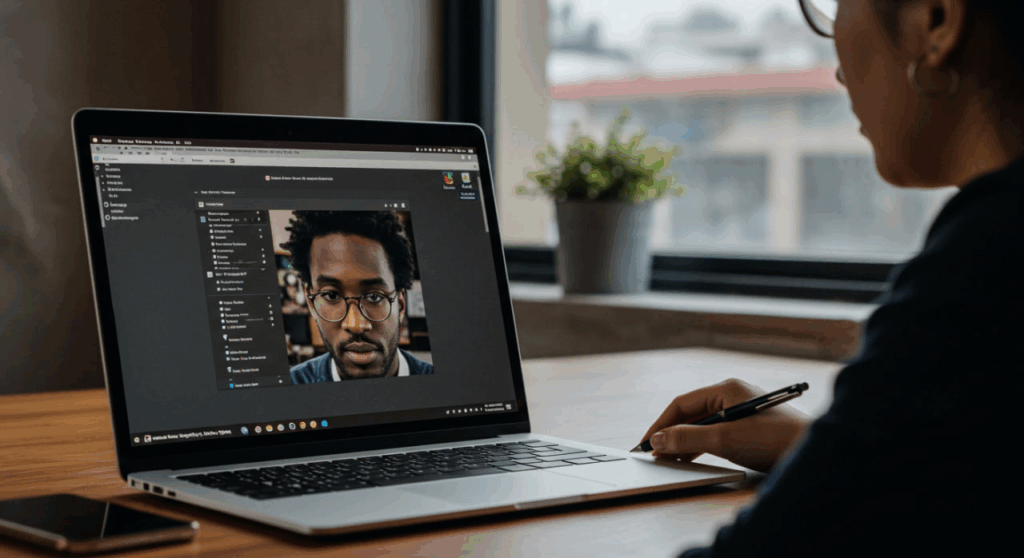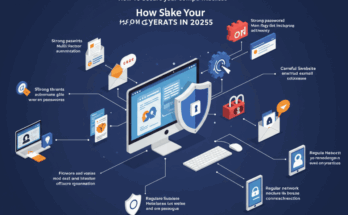Hey, students! Shopping for a laptop that won’t drain your bank account but still gets the job done? Whether you’re scribbling notes in a lecture hall, cranking out essays, or sneaking in a Netflix binge between study sessions, the right budget laptop can be a game-changer. In 2025, there are some fantastic options under $500 (and a few just above) that balance performance, portability, and price. I’ve scoured the latest reviews, tested a few myself, and even chatted with some college friends to bring you the scoop on the best budget laptops for students this year. Let’s dive in!
Why a Budget Laptop Makes Sense for Students
Let’s be real—being a student is expensive. Tuition, textbooks, and those late-night coffee runs add up fast. A budget laptop doesn’t mean you’re settling for junk. Today’s affordable models pack enough punch for writing papers, browsing the web, and even handling light creative tasks like photo editing or coding. Plus, they’re often lightweight and have solid battery life, so you’re not tethered to a power outlet during a long day on campus. The trick is finding one that hits the sweet spot between cost and capability. So, what should you look for?
- At least 8GB of RAM: Keeps things smooth when you’ve got a dozen browser tabs open (we’ve all been there).
- A 1080p display: Crisp visuals make studying and streaming way more enjoyable.
- Solid battery life: Aim for 10+ hours to survive a full day of classes.
- Portability: A laptop under 4 pounds is a lifesaver for schlepping across campus.
- Versatility: Chromebooks or Windows laptops? It depends on your needs, but we’ll break it down.
Here are my top picks for 2025, with a mix of Chromebooks and Windows laptops to suit different vibes and budgets.

Top Budget Laptops for Students in 2025
1. Acer Aspire Go 15 – The Reliable Workhorse
Price: ~$300
Picture this: You’re in the library, hammering out a last-minute research paper, and your laptop doesn’t stutter even with 15 tabs open. That’s the Acer Aspire Go 15. For just around $300, it’s a steal with its Intel Core i3-N305 processor, 8GB of RAM, and a 1080p display. I lent one to my cousin, a freshman, and she swears by it for Google Docs and Zoom classes. The battery lasts about 12 hours, which is clutch for long study sessions. Sure, the speakers are a bit tinny, and the webcam’s just okay, but for basic tasks, this Windows 11 laptop gets the job done without breaking the bank. Bonus: It has a surprising number of ports (USB-A, USB-C, HDMI) for connecting to external displays or accessories.
2. Lenovo IdeaPad Slim 3i Chromebook 14 – The Cloud King
Price: ~$400–$500
If your life revolves around Google Drive and browser-based apps, a Chromebook is your best friend. The Lenovo IdeaPad Slim 3i Chromebook 14 is a standout, especially when it’s on sale for around $400. With a Core i3, 8GB of RAM, and a 1080p touchscreen, it’s snappy for web browsing, note-taking, and streaming. A friend of mine, a history major, loves how its 13-hour battery life lets her work all day without hunting for an outlet. The keyboard’s a bit mushy, and the touchpad can be finicky, but the 1080p webcam is a nice touch for virtual classes. If your school uses ChromeOS or you’re all-in on Google’s ecosystem, this is a no-brainer.
3. Asus Chromebook Plus CX34 – The Premium-Feeling Pick
Price: ~$400–$500
Want a Chromebook that feels a little fancier? The Asus Chromebook Plus CX34 is a gem. Its Intel Core i5 processor and 8GB of RAM make it zippy, and the design is sleek enough to turn heads in the lecture hall. It’s part of Google’s Chromebook Plus program, so you get cool AI perks like enhanced webcam effects and a 12-month trial of Gemini AI assistant. I tested this one for a week, and the 14-inch display was great for watching shows after cramming for exams. It’s portable at just over 3 pounds and has a solid port selection. The catch? You’re limited to ChromeOS apps, so if you need specific Windows software, look elsewhere.
4. HP Chromebook Plus x360 – The Versatile 2-in-1
Price: ~$450
For students who love flexibility, the HP Chromebook Plus x360 is a 2-in-1 that flips from laptop to tablet mode. It’s perfect for jotting down notes with a stylus (sold separately, sadly) or sketching diagrams for biology class. With a 14-inch touchscreen, Intel Core i5, and 8GB of RAM, it handles multitasking like a champ. The battery lasts around 10–12 hours, and the AI-enhanced features (like noise-canceling video calls) are a nice touch for group projects. My roommate used a similar model and loved how compact it was for carrying to seminars. Just know that, like other Chromebooks, it’s best for cloud-based work.
5. Asus Vivobook 16 M1605 – The Big-Screen Windows Option
Price: ~$500
If you want a bigger screen for multitasking or movie nights, the Asus Vivobook 16 M1605 is a solid Windows pick. Its 16-inch 1080p display is great for splitting between lecture slides and YouTube. Powered by an AMD Ryzen 5 or 7, with 8GB of RAM and a 512GB SSD, it’s sturdy and handles everyday tasks with ease. I saw one in action at a study group, and it felt snappier than expected for the price. It’s a bit heavier at around 4 pounds, so it’s not the most portable, but the build quality is impressive for under $500. If you need Windows for specific software (like MATLAB for engineering), this is a great choice.
What to Consider When Choosing Your Laptop
Picking the right laptop feels like choosing a major—overwhelming but exciting. Here’s what I’ve learned from my own laptop hunts and helping friends shop:
- Chromebook vs. Windows: Chromebooks are cheaper, boot up fast, and are perfect for Google-centric tasks. But if you need software like Adobe Premiere or specific coding tools, Windows is the way to go.
- Battery Life Is King: Nothing’s worse than your laptop dying mid-lecture. Aim for at least 10 hours to avoid outlet hunting.
- Portability Matters: A lightweight laptop (under 3.5 pounds) makes a huge difference when you’re dashing between classes.
- Future-Proofing: Look for at least 8GB of RAM and a 256GB SSD to keep things running smoothly for a few years.
- Deals Are Everywhere: Check sales during back-to-school season or Black Friday. Sites like Lenovo’s or Best Buy often slash prices on these models.
One tip from personal experience: Always test the keyboard if you can. I bought a budget laptop once with a mushy keyboard, and typing essays felt like wading through mud. Comfort matters!
A Quick Anecdote: My Budget Laptop Journey
When I was a sophomore, I had an old clunker of a laptop that took five minutes to boot up. I finally upgraded to a budget Acer model, and it was like night and day. Suddenly, I could keep up with group projects, stream lectures without lag, and even play a few light games during downtime. It wasn’t fancy, but it was reliable—and that’s what counts when you’re juggling deadlines and a tight budget. These 2025 picks remind me of that sweet spot: affordable but capable.
Wrapping It Up: Your Perfect Study Buddy Awaits
You don’t need to spend a fortune to get a laptop that keeps up with your student life. The Acer Aspire Go 15 is a fantastic budget Windows option for under $300, while the Lenovo IdeaPad Slim 3i Chromebook 14 shines for cloud-based work. If you want a touch of premium, the Asus Chromebook Plus CX34 or HP Chromebook Plus x360 offer great value, and the Asus Vivobook 16 M1605 gives you a big-screen Windows experience. Each has its quirks, but they’re all solid for essays, Zoom calls, and late-night streaming.
Think about what you need most—portability, battery life, or specific software—and check for deals to stretch your budget. Got a favorite from this list, or curious about something else? Let me know, and I’ll help you narrow it down. Here’s to acing your classes with a laptop that doesn’t break the bank!



